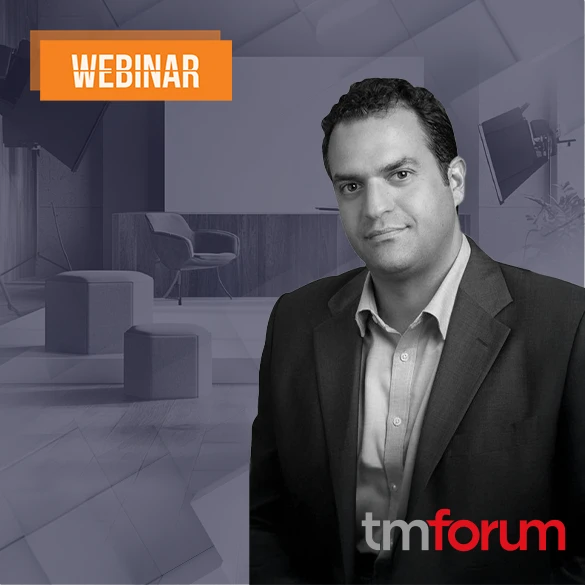Why telcos are getting better at delivering individualized customer experiences?


Customer engagement is for many CSPs a discipline which they acknowledge requires further improvement, despite the industry’s current obsession with transforming the way we interact with customers and operators' drive to differentiate on customer experience (CX). The truth is that many CSPs’ customer engagement processes and the IT systems that they are currently using to support those processes were born in a different era. A time when product and service offerings were less complex, tracking customer satisfaction metrics was something of a vague art and customer expectations were significantly lower.
The latest wave of technologies such as AI chatbots and advanced data analytics, and new techniques in self-service, digital channel management, customer journey management, campaign management, and modernized CRM are positively transforming the return-on-investment models of new customer engagement initiatives. The upshot of these developments is that CSPs can now initiate marketing, sales and customer service engagements which are laser-focused on the actual needs of prospective customers rather than an estimate of what customers are generally looking for.
One key transformational effort we are seeing in the industry is the interconnection of all IT systems, through which customer-affecting processes flow. For example, in an orchestrated service fulfilment process, the order management system being able to access CRM customer profile data may influence the way an order is accepted and fulfilled, in line with the customers’ requirements and the current SLA. In the past this level of detail may have seemed like a nuanced ‘nice to have’ feature, but it is becoming evident that these incremental improvements are the basis of the customer engagement characteristics offered by digital natives, which are seen as the model to strive towards.
This interconnected set of customer-facing systems is now often referred to as a customer engagement hub (CEH). The concept of the CEH is a way to look at the several functional areas of telco service operations working together with the aim of providing optimal customer engagement. A CEH should tightly connect processes together across marketing, sales, and customer service and have awareness of the other BSS/OSS activities going on below it in the operational stack. Let’s look at a couple of examples where this approach can lead to significant gains in engagement and ultimately customer experience.
Predicting customer needs
CSPs are coming to realize that differentiating on products, services and features has its limitations, a more profound differentiation is in the customer relationship. Consequently, a drive to deepen those customer relationships and maximize value can be achieved by predicting customer needs, increasing personalizing and unifying customer experience across all possible interaction channels. At TM Forum we are seeing a spike in the downloads of Open APIs which support this transformation strategy, such as Shopping Cart, Process Flow Management, Product Catalog Management and Order Management. As a CEH cannot be bought as a solution, we are seeing CSPs building this concept into their existing IT architectures, often with the addition of some new overarching customer engagement solutions to act as the intelligence layer on top.
To be able to predict a customer’s needs ahead of an interaction presents a powerful opportunity. If a marketing initiative causes a customer to come to a CSP via a call center agent or a web store, real-time checks on all currently known customer parameters can then inform a series of best offers to present during that interaction, vastly improving the likelihood of a sale which can trigger an automated service fulfilment process and positive overall customer experience.
Making this happen relies heavily on data analytics (in some cases guided by AI), maximum interoperability through open APIs, high data quality across BSS systems and the right configuration of actionable insights taken from the source data.
Future services depend on intent-based customer engagement
‘Intent’ is a reference to customer requirements which can be met by the process of accurately identifying those needs and putting in place an operational architecture over an autonomous network which is able to automatically able to fulfil the exact customer needs without vast custom installations. The manual and static programmatic and rules-based automation are giving way to more model- and knowledge-driven approaches that are based on the intents behind business, service, and resource requirements and constraints. By adopting those approaches, services can adapt and evolve more autonomously as network conditions, business goals and customer requirements shift over time.
As this evolution takes place there is a clear need for marketing, sales and customer service to evolve towards this future concept of telco operations. If we look at new service models in the AR/VR/Metaverse sphere, for example, customers using a CSP’s metaverse will be interested in cross-industry partner solutions and complex bundles of in-experience purchases. In this situation, a call center agent is not the preferrable channel of interaction, the storefront must be self-service and embedded into the metaverse experience.
As such, an ability to react in real-time with an awareness of all the potential permutations of the customer’s possible intent will be necessary to provide optimal customer engagements. To make this happen a CSP will have many changes to the typical current state of customer engagement:
• Increased focus on improvement areas and gaps between the multiple engagement channels and the connection of those gaps
• Design and orchestration of the most essential customer journeys and automated workflow orchestration
• Tight alignment of customer-facing departments, such as marketing, sales, and customer service
• Personalized and contextual customer engagement across all interaction channels
• Partner ecosystem interconnection and data sharing
• AI/ML driven decision making in real-time
• Security
• Natural language processing
Everything to play for
As we have shown above there are several areas of low-hanging fruit which CSPs can address in the short term to improve their customer engagement prospects. The wider effect of investing in customer engagement solutions will have an impact much wider than just improved customer experience, more effective marketing and an uptick in sales. The wider transformational effect will be felt in:
• Smoother and more accurate service fulfillment and assurance processes
• Partners ecosystems are incentivized by increased contextual customer awareness
• New service models like 5G network slicing can be optimized by more granular customer data
• Costs are cut by process automation and a decrease in the number of faults
• Operational efficiency drives innovation in the telco business by decreasing the amount of maintenance required across the various operations functions
• Consumers and businesses can be better informed and educated as to the changing nature of the industry
Author: Dean Ramsay, Principal Analyst, TM Forum








